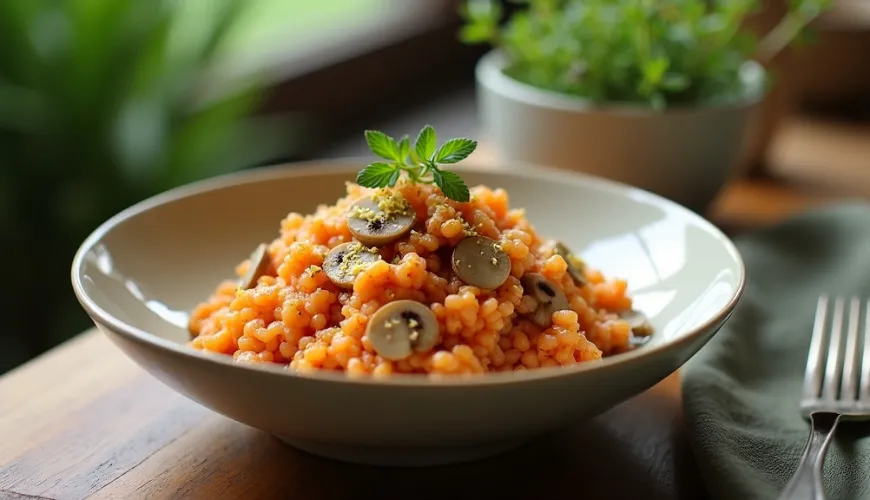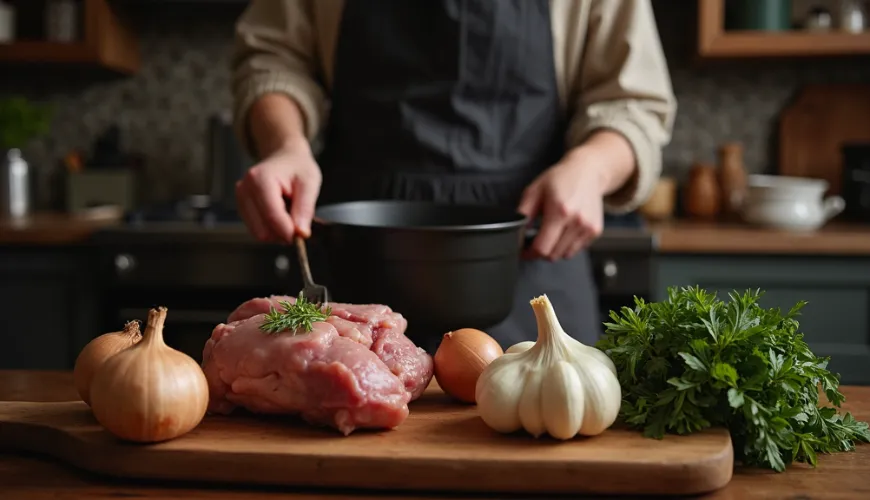
Sulc is a traditional dish that is making a comeback in modern cuisine.

Sulc – A Traditional Delicacy That (Doesn't) Belong to the Past?
Sulc. A word that brings a nostalgic smile to some and perhaps a slight shock to others. In any case, it evokes times when nothing was wasted, meat was used to the last piece, and the home kitchen was full of aromas that are hard to find today. Whether we know it as huspenina, tlačenka, or aspic, sulc is a staple of Czech culinary history. But can it be included in a modern diet? And how can you prepare it at home to make it not only tasty but also healthier?
What Exactly is Sulc and Why Has It Been Somewhat Forgotten?
Sulc, also known as huspenina, is a dish made by slow cooking pork (or sometimes beef) trotters, skins, hocks, and other parts rich in collagen. The result is a strong broth that gels when cooled – and that's its characteristic feature. Cooked meat, garlic, onion, spices, and sometimes vegetables or eggs are added to the liquid phase. Once everything has set, a translucent slab of tasty gelatin with meat inside is formed.
Thanks to its high content of natural collagen, sulc was once considered a "strength food" – strengthening joints and aiding recovery. Today, however, it's often viewed with skepticism, considered heavy, fatty, or even unhealthy. Perhaps it's the aroma that arises during long cooking, or the fact that it is made from animal parts that have little space in modern kitchens. But the reality is somewhat different.
Well-prepared sulc can be surprisingly light, nutritious, and free of unnecessary additives. Moreover, you can add a lot of fresh ingredients to it, elevating it not only in taste but also nutritionally.
Try our natural products
Sulc Recipe - Step by Step
Preparing sulc isn't complicated, but it requires patience. The key is long and slow cooking, which releases collagen from the meat and ensures that the dish sets without using gelatin.
What You'll Need:
- 1 pork hock or 2 trotters (or a mix of hock + skin + trotters)
- 1 onion
- 5 cloves of garlic
- 10 black peppercorns
- 5 allspice berries
- 2 bay leaves
- Salt to taste
- Optionally carrots, parsley, or celery
- For seasoning: vinegar, mustard, freshly ground pepper
Instructions:
- Thoroughly wash the meat, possibly scraping the trotters clean. Place in a large pot and cover with cold water until fully submerged.
- Bring to a boil, then reduce the heat and skim off any foam from the surface. Add the onion (unpeeled, just halved), garlic, spices, and salt.
- Simmer on very low heat for 4 to 6 hours. The broth should just gently bubble – this is crucial for a clear result.
- When the meat is tender and begins to separate from the bones, strain the broth through a sieve. Pick the meat and cut it into smaller pieces.
- Taste the cooled broth, adding more salt if needed. For a clearer sulc, you can strain the broth again through a fine cloth.
- Distribute the meat, and optionally cooked vegetables or an egg for garnish, into bowls or molds. Pour over with the broth and let it set in the refrigerator for at least overnight.
The result is homemade sulc without preservatives, dyes, or added gelatin, which can be eaten simply with a spoonful of vinegar and fresh bread, or as part of a light salad.
Sulc and a Healthy Lifestyle - Do They Go Together?
You might be surprised to learn that sulc has its place in a modern diet. Thanks to its composition, it is rich in natural collagen, which supports the health of joints, tendons, skin, and hair. Moreover, it contains no starches, flour, or sugar, which is appreciated by those following low-carb or paleo diets.
On the other hand, it's true that sulc can be fatty – it depends on the meat you use. If mainly skins and trotters are used, the resulting sulc is denser and has a higher fat content. However, if you use a combination of leaner meat (e.g., from the hock) and supplement it with vegetables, you'll get a lighter version suitable even as a snack or light dinner.
In practice, this might look like cutting a piece of sulc into cubes and adding it to a salad of fresh vegetables, complemented by a drop of quality olive oil and vinegar. The result is a refreshing yet filling dish, far removed from the classic image of a heavy pub meal.
When Old Recipes Come Back to Life - Sulc in a New Role
Interestingly, sulc has been experiencing a quiet comeback in recent years. Not as a mass-produced product in stores, but in households returning to traditional recipes. Also among those interested in the "nose-to-tail" cooking philosophy, which involves using all parts of the animal without waste.
Sulc perfectly fits into the concept of sustainable cooking. Not only does it use meat parts that might otherwise go unsold, but its preparation is economical and ecological. No plastic packaging, no preservatives – just meat, water, spices, and time.
One visitor to a farmers' market in Prague, Mrs. Jana, describes how she returned to sulc after years: "When I found out how much meat is left unused after a pig slaughter, I decided to try an old family recipe. Today, I can't imagine winter without homemade sulc from pork trotters."
Sulc as an Inspiration to Think About Food
It might not just be about sulc itself, but what it represents – a return to simplicity, respect for ingredients, and a tradition that made sense. In an age when new "superfoods" are constantly emerging, we often forget that we have treasures in our own kitchen worth rediscovering.
Whether you prepare sulc according to the classic recipe or give it a modern twist, one thing is certain – it's food with a story. A story about how you can create a lot from a little when you know how. And perhaps this philosophy makes it the right delicacy for today's times.




